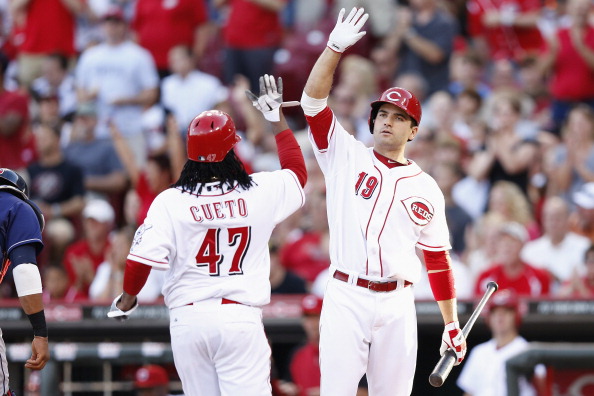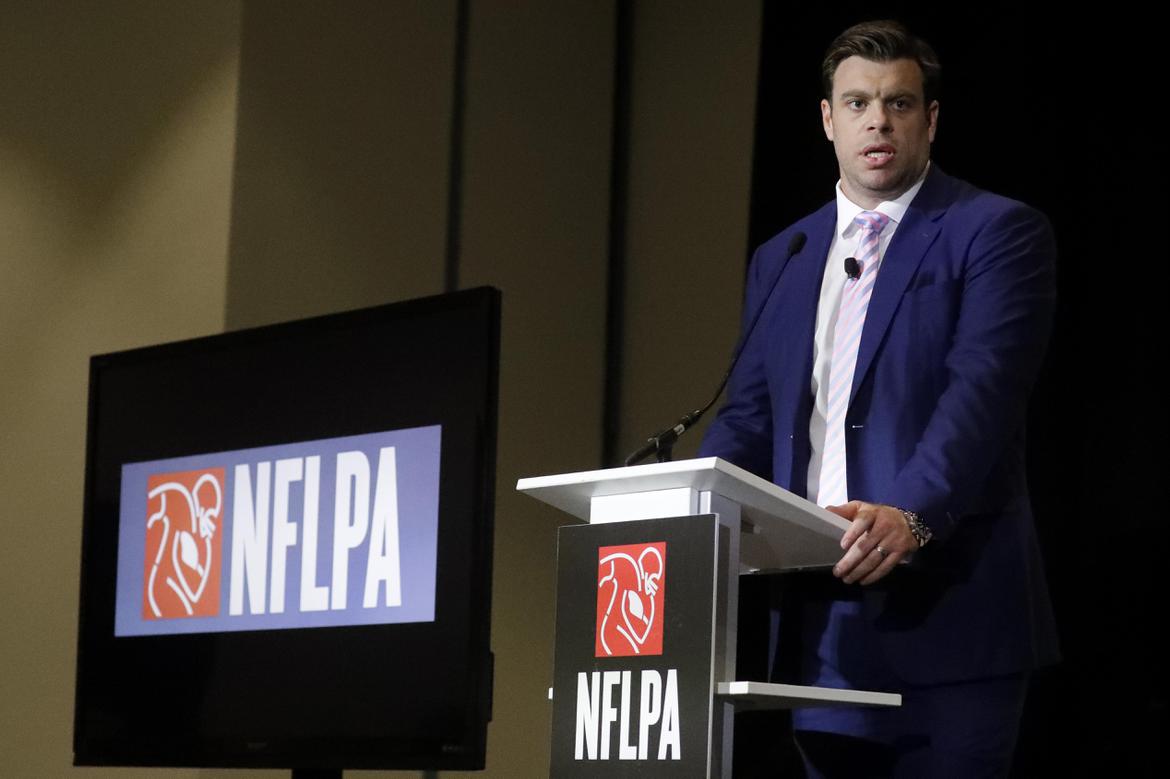This doozy was sent to us by twitter follower Dan Barrett (@dbarrett1984). In 2008, some thought the Cincinnati Reds needed a spark. They hadn’t made the playoffs since 1999 and, from 2000-2007, had finished over .500 only once. In February 2008, just before Spring Training, the team was apparently shopping around for another starting pitcher for a rotation lacking depth. According to reports, they had their eye on Oakland A’s right-hander Joe Blanton, who was coming off a solid 2007 campaign where he notched a 14-10 record in 230 innings with a 3.95 ERA. Problem was, A’s General Manager Billy Beane was apparently asking for three of the best Reds’s prospects in return: pitchers Homer Bailey and Johnny Cueto, and outfielder Joey Votto.
Beane’s proposal was a clear non-starter and seemingly everyone scoffed at the idea of it. Except (at least) one person. Enter Cincinnati Enquirer sports columnist Paul Daugherty. Daugherty, who has been writing for the Enquirer since 1994, wrote in a February 2008 blog post that he thought the Reds should pull the trigger on the proposed deal despite the expensive cost. Below is the text of Daugherty’s entire post, in full, including an analogy that would make one believe Mr. Daugherty does not think much of 401K plans…
Interesting how so many fans are so concerned about trading prospects for established talent. This time, it involves acquiring J. Blanton from Oakland for, apparently, Bailey/Cueto, Votto and a lesser prospect.
I do it in a second because (1) a reason you build your farm system is to have players to trade and (2) If you are a small-money club, you don’t get chances to win every year. The Reds’ equation this year is simple: Make Matt Belisle your #3 starter, finish 3rd or 4th, win about 80 games; trade for Blanton, win 85 or more, be in the mix all summer.
I look at prospect-hoarding like this: You save your whole life for retirement. You sacrifice when you’re young, so you can take it easy when you’re not. Then when you retire, you become sick or infirm and all that money you could have spent when you were young enough to enjoy it just sits there.
Blanton is a proven winner, a guy who threw 230 innings last year, gave up only 16 homers in the AL and walked only 40 hitters. Cueto is. . . is. . . we don’t know. Same for Votto and Bailey.
Do you want to win after 8 years of losing? Or do you want to brag about the prospects? Spend your money now, while you can? Or hoard it, for an uncertain future that might never arrive?
Thankfully, Reds chose option number two and avoided what would have likely been remembered as a historically bad trade.
Votto immediately turned into one of the Reds most consistent hitters and broke out as a star in 2010, hitting 37 HRs and 113 RBIs en route to a National League MVP award. The four-time all star continues to be a top-10 hitter in baseball.
Cueto broke out in 2011 becoming one of the best starters in baseball. He won 19 games with a 2.78 ERA in 2012 and won 20 games in 2014. The Reds traded the two-time all-star to Kansas City in 2015 where he helped the Royals to a World Series title.
Bailey had productive 2012 and 2013 campaigns and has showed signs of brilliance at times, but injuries have derailed his career as he has been on the disabled list the majority of the past four years.
The A’s finally found a taker for Joe Blanton in July 2008: The Philadelphia Phillies, where Blanton pitched serviceably to help Philadelphia to a World Series title. However, he has never been able return to his 2007 form as a starter. Blanton has had some success in recent years as a reliever including a solid 2016 campaign with the Dodgers. At 36, he is still pitching today, for the Washington Nationals.
As for the Reds, their prospect hoarding paid off, as they won the NL Central in 2010 and 2012, and made the NL Wild Card Game in 2013. Although they did not have much success in the playoffs, its safe to say that they wouldn’t have won as many games if they traded Votto and Cueto, who were integral to their success.





About Fred Segal
Fred Segal, 35, grew up in the Miami, Florida area and currently lives in Coral Springs, Florida, with his wife and two children. He is currently an attorney practicing in West Palm Beach, Florida, at the law firm Broad and Cassel. Fred is a graduate of the University of Florida and is a rabid, borderline unhealthy, supporter of the Florida Gators.
Recent Posts
How Cryptocurrency Influences Sports and Esports
The rise of Bitcoin and other altcoins (such as Ethereum, USDT, Ripple, and others) has led to a...
Live sports on TV & stream: TV-guide with fixture list, times and channels
Want to find out where the next game is broadcasted on TV or stream? You’re looking for a...
Mauro Ranallo and WWE agree to mutually part ways
Mauro Ranallo is leaving WWE. Ranallo had worked with WWE since early 2016, first as a play-by-play announcer...
NFL Players Can Now Use CBD within the NFLPA Agreement
In years gone by – and even today – there has been a lot of controversy over what...
Former NASCAR CEO Brian France sues @DrunkBrianF parody account
There’s been a surprising amount of litigation over political parody accounts on Twitter, from a lawsuit against Peoria,...
The art of the demotion: some of the most prominent ESPN “reassignments” that have minimized negative coverage
One particularly unusual thing with ESPN relative to many other companies is that when they make a change...